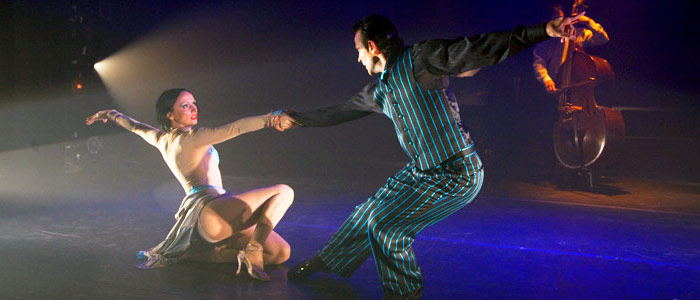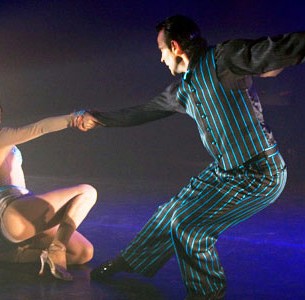
Photography by Mia Dalglish
“Performance tango, even though excellent dancers may be involved, often presents music and dance with little connection. We were bored with that as a creative prospect,” says Alfredo Minetti, speaking by phone from his New York City home. Musician-anthropologist Minetti is explaining how This is Tango Now was formed, a creative project he co-founded with highly renowned tango artists Fernanda Ghi and Guillermo Merlo.
His professional friendship with Ghi and Merlo was born when they first collaborated in 2010 on a previous project of Minetti’s, the Zero Hour Tango Festival in Bloomington, Indiana. Minetti, who grew up between his homeland of Uruguay, as well as Argentina, Brazil and France, had stayed to teach at the University of Indiana after studying Anthropology and Music. The success of the festival and the creative kinship that developed between Minetti, Ghi and Merlo led to This is Tango Now.
Their current performance,“Identidad,” explains Minetti, presents a tale of manipulation by familial and societal forces which is reflected in the interplay between three figures – the puppet, the puppeteer and a creative spirit called Duende, in Spanish poet Garcia Lorca’s sense of the creative force which must possess flamenco artists for the dance and music to achieve its greatness.
“Identidad” was developed by Minetti, Ghi and Merlo along with a team of other talented artists in a manner that extends tango beyond its traditional limits to incorporate not just live music and dance, but elements of contemporary dance and theater. As Minetti affirms: “We don’t want to be seen at all as a traditional tango show.”

Minetti continues to describe the art that This is Tango Now wishes to to share, which was born at the beginning of the twentieth century when the tango: “moved from the feet to the head.” That transition had begun in the previous century when Buenos Aires, originally a smaller port city, was overcome by large waves of immigrants from lands such as Italy, Poland, Spain and Russia. In the decades to follow, as the city grew exponentially, the tango acquired its fatalistic sense, because Minetti muses “there was no work and there was no way back home.”
Simultaneously, the art of tango developed a highly sophisticated story-telling sense when many great Argentinian poets chose to write the lyrics to tango songs. It is this extraordinary capacity to narrate a full range of emotions, says Minetti, that This is Tango Now wants to highlight in its work: “What we do is performance tango, with the intensity and union of social tango.”
Nevertheless, he clarifies, the essence of tango is never lost: “We understand tango profoundly. It is not just dance and music – tango is a way to interpret reality. But even though we believe tango has to have content, it also has to be a wonderful experience for people. It’s difficult, but in This is Tango Now, we really do try to have both.”
This is Tango Now: Identidad will be presented April 6 and April 7 at the Mayne Stage.
Check Catalina’s blog and the archives of Beat Latino (like Beat Latino on FBtoo!) to explore the roots as well as trends in Latin musical arts.
